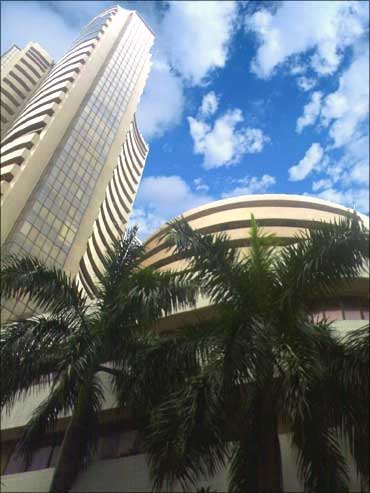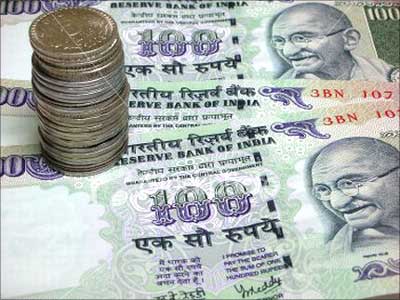Nagesh Kumar
Global developments in the past few weeks have been reminiscent of the events that followed the collapse of Lehman Brothers in September 2008.
Asian and emerging capital markets have fallen in tandem with their global peers.
Besides the ongoing European debt crisis, worries about raising the US debt ceiling by August 2 heightened the volatility in capital markets in July.
Even though the debt ceiling was eventually raised, Standard & Poor's downgraded the US long-term sovereign debt on August 5 from AAA to AA+ for the first time ever.
This led to a five to seven per cent decline in the US stock exchanges in one day on August 8, triggering a sharp reaction in global markets.
Since then markets all over the world have been sinking downwards in a concerted manner.
The Indian stock market has also been under tremendous pressure and its market valuations have dropped by $200 billion, with a 13 per cent decline in the Sensex.
The Korean index, KOSPI, like other Asian indices, hit the 2008 levels with a 6.2 per cent loss on August 19.
So a big question is: Are we back to a September 2008 kind of situation or a double dip?
...
Reducing exposure to capital flows can shield region
Image: US economy's growth outlook is severely affected.It is important to consider whether the downgrade by S&P was an isolated affair or was shared by others.
Even though Moody's has retained its ratings of the US debt, it has changed the outlook to negative.
Furthermore, the insurance premium on the US debt against default has risen from an average of 25 basis points in 2007 to a range of 55 to 75 basis points now, implying an increased risk of default.
However, with the European debt crisis deepening and spreading to cover Italy and Spain, the US dollar has actually strengthened against the euro and the pound.
The US economy's growth outlook is severely affected and is put at 1.7 per cent in 2011 compared to three per cent in 2010.
Even though the US economy is technically not in recession yet, the risk of a double-dip recession has increased.
However, there is a critical difference between the situation in 2008 and the present one.
The 2008 crisis was a result of bursting of the real estate bubble and concerns about the subprime mortgage market.
The governments had the policy space to roll out massive fiscal and monetary stimulus packages to contain the damage.
...
Reducing exposure to capital flows can shield region
Image: Fiscal policy is constrained by the sovereign debt crisis.This time the government's ability in terms of policy arsenal is much more limited.
With nearly zero interest rates, the US and European economies find themselves in a liquidity trap, hence the move to quantitative easing.
But when the sentiment is down, even quantitative easing does not help.
Excess liquidity finds its way to emerging markets such as Brazil, India and China, seeking good returns and bringing volatility to their shores too.
Fiscal policy is severely constrained by the build-up of a sovereign debt crisis.
The governments in the US and the Eurozone have to manoeuvre a delicate balance between short-term support for growth and jobs and fiscal consolidation in the medium term.
Neglect of support for growth and jobs in favour of fiscal consolidation will be self-defeating.
A credible medium-term plan of fiscal consolidation and debt reduction would be equally important to restore confidence.
The impact of the ongoing global turmoil on the Asia-Pacific economies will be felt through different transmission mechanisms.
...
Reducing exposure to capital flows can shield region
Image: Booming commodity prices may come down,As the growth rate falters in advanced economies, the export-oriented economies of the region will be significantly impacted.
Some of these economies have already started showing signs of slowing down.
Leading indicators like the Purchasing Managers Index for the manufacturing sector in emerging markets are suggesting incipient signs of a slowdown.
For India, however, the aggressive monetary tightening by the Reserve Bank of India to address inflationary pressures has been a greater source of the slowdown than a slump in the western economies.
The slowing global economy may mean that booming commodity prices may come down, like oil prices which have moderated lately.
This may bring some relief from inflationary pressures for India and other net importers of commodities.
The other implication beyond the short-term challenge of the slowdown for the Asia-Pacific economies is to develop new engines of growth to sustain their dynamism over the medium term.
...
Reducing exposure to capital flows can shield region
Image: The IMF says capital controls are important.Given the growing inability of the advanced economies to sustain growth in the region given the challenge of restoring debt sustainability, the Asia-Pacific economies have to rebalance in favour of greater domestic and regional demand over the coming decade.
The other adjustment the Asia-Pacific economies can do to bring down volatility is to reduce their exposure to short-term capital flows.
It is timely to assess the costs and benefits of these flows which will reveal that these flows have high servicing burden besides bringing a high degree of volatility in the financial sector while contributing little to the capital formation in the host economy.
In a dramatic reversal of its long-held position, the International Monetary Fund now agrees that capital controls are an important constituent of the policy tool kit for emerging economies.
The author is chief economist of the United Nations Economic and Social Commission for Asia and Pacific, Bangkok
The views expressed are those of the author and do not necessarily reflect the views of the United Nations







article